I’m going to be short and to the point since I’m poor at writing. It was finally time to build amplifier #4! This time I wanted to have another go at something high-gain (because I think that’s pretty cool).
I started out with the JCM800 #2204 schematic and used that as the general structure for the gain channel. I wanted a 30W-ish EL34 push-pull output stage, so I reused (with appropriate modifications) the output stage I put together for amp #3. I also had the output and power transformers ready as I scrapped amp #2 (it didn’t work properly, go figure…); a Hammond 1750Q and 372FX, which gave me some design directions.
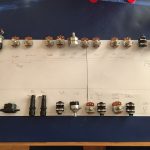
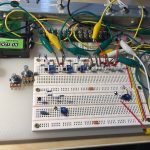 After prototyping and going through several iterations I ended up with a two channel amp, high-gain and clean, with a blending phase inverter because I thought that would be fun. But since blending both channels in the P.I. would prevent the use of negative feedback, I also added, again for fun, a passive switching scheme that could take the amp between blending both channels, and muting one channel while giving the active channel the option of having negative feedback applied.
After prototyping and going through several iterations I ended up with a two channel amp, high-gain and clean, with a blending phase inverter because I thought that would be fun. But since blending both channels in the P.I. would prevent the use of negative feedback, I also added, again for fun, a passive switching scheme that could take the amp between blending both channels, and muting one channel while giving the active channel the option of having negative feedback applied.
I had great fun and success building the previous amp on fiberboard, so I wanted to do the same this time, foregoing the point-to-point disaster that was amp #2 😉
I always forget how much work goes into building an amp from scratch. I must have been working on this six months straight, not counting the idea and drawing phase. And the shear price of all the parts had to be divided across many months anyway. This is certainly not a cheap hobby…
Lots of more or less interesting images of the amp taking form.
Spent some time designing nice face- and back plates, and got them etched in acrylic plastic from . Came out really great at a reasonable price. And of course I ended up bothering the circuit and ditching the “Mid” control in favour of an “Output” not long after. Typical! 🙁
No big, complicated build without figuring out what’s wrong and doing some changes along the way. Notice the fire extinguisher.
Had to build a house for it as well. Not the most exiting part of the project, but it’s nice seeing everything coming together.
And finally, done.
I’m pretty happy how it ended up. Here’s a quick, off-the-top-of-my-head feature list:
- High-gain channel in the spirit of the JCM800.
- James tonestack with shift control (based on idea from Merlin Blencowe’s books).
- Less bright than the JCM800, because I don’t like too bright.
- Gain into- and out of the gain channel for some added possibilities (turned out essential for being able to blend the two channels).
- Parallel FX-loop
- Clean channel in the spirit of the DC30.
- “Big muff”-style tilt control for single adjust of both bass and treble.
- Not enough amplitude compared to the gain channel. Next time…
- Master volume and presence control in the output stage.
- 30-ish watts of cathode biased EL34 push-pull output. I like cathode bias for the additional fail-safe. And it sounds good 🙂 Oh, and no manual bias adjustments required.
- Blending of gain and clean channels possible (no NFB).
- Single channel output (with or without NFB).
The schematic isn’t 100% when it comes to drawings of transformers, impedance switch etc. I didn’t want to spend time drawing more components in EagleCAD, so I just went with something close.
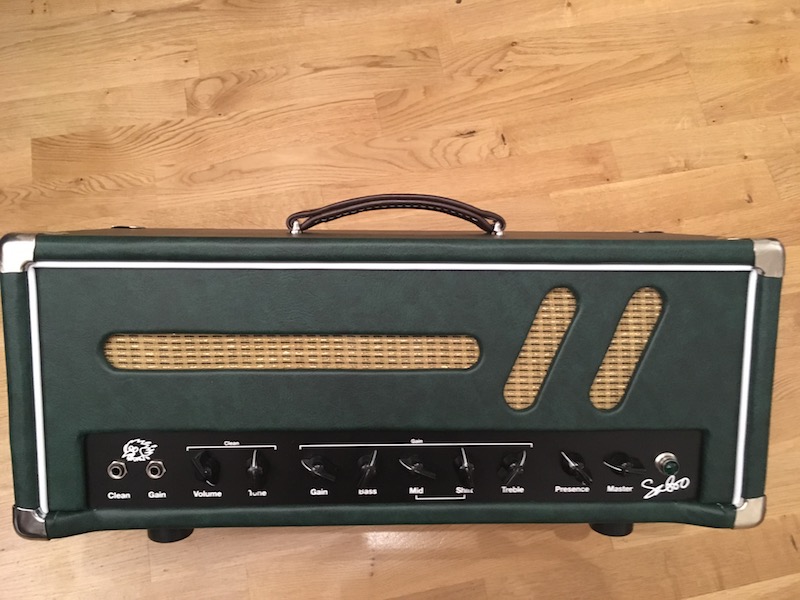
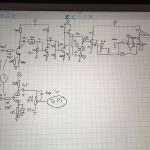
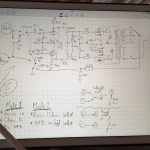
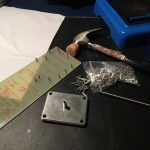
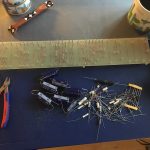
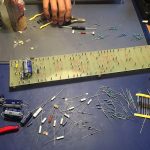
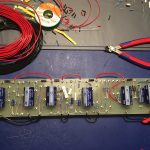
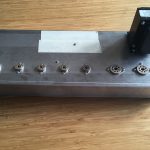
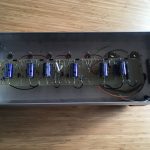
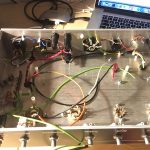
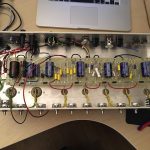
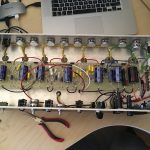
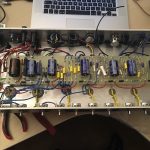
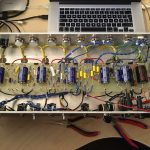
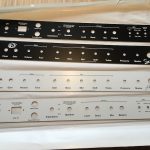
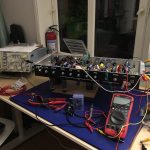
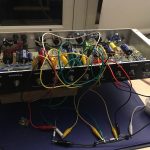
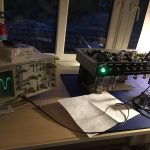
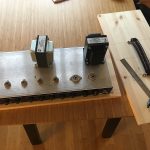
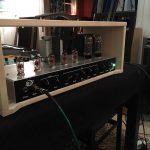
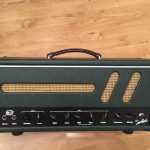
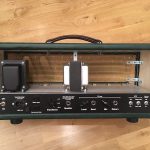
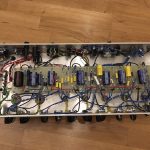
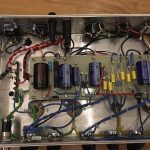
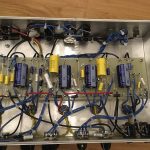
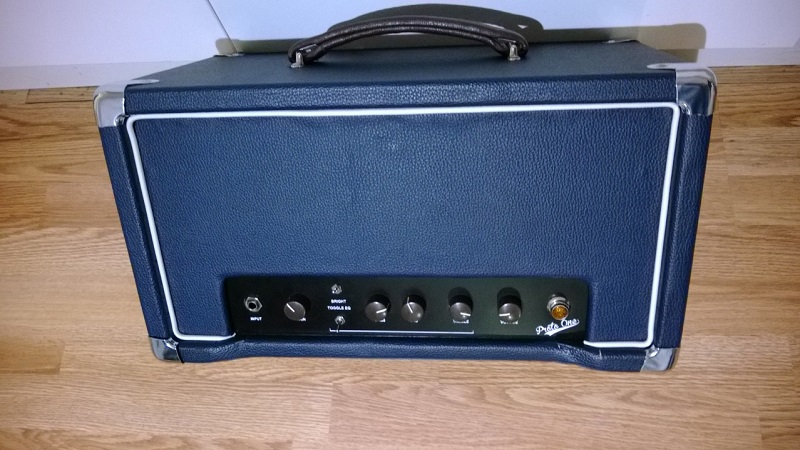
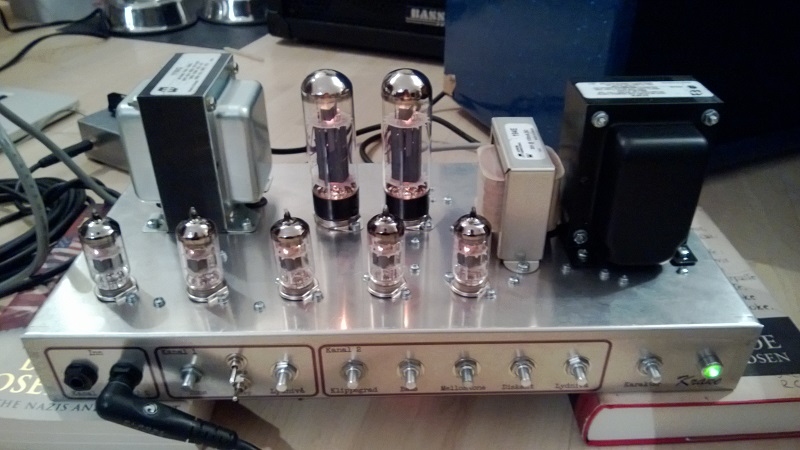
Hi from Vancouver,
The amp is looking great. I am in fact working on a JCM800 ish amp as well.
Didn’t change too much but applied a lot from the “Valve Wizard”.
I have build a few amps by now and like the way you placed the fuses right after secondary winding of the PT.
Would be great to hear samples – I am very curious about the NFB switch.
Keep up the good work – it is very much appreciated
Hi Harald!
Great to see you back here – and a great amp!
Can you please explain the switching? I don’t get it from the schematics…
I’m planning a similar amp, but with only one input and relay switching. But the idea of combining that with your nfb switching is interesting.
And yes, sound samples would be very helpful You don’t need to play well for that. Simple chords and some slow played single notes are way better for demoing the amp than high speed shredding
Thanks. I have to agree it does look good. Above average satisfied 🙂
Thanks guys! No sorry, no sound samples. I’m too shy/self conscious/poor at playing to put up anything 🙂 Maybe if I had my friend playing… Will keep in mind.
Great work!
Do yu have any sound samples? 🙂
Welcome Back! I’ve been checking sabrotone.com here and there, then suddenly I saw you uploaded a pic on Facebook and I got all excited haha Great amp too by the way! *high five*